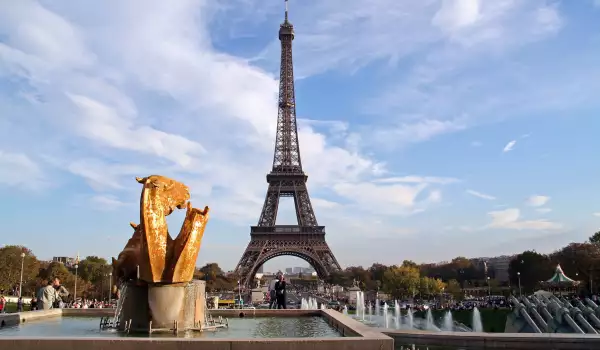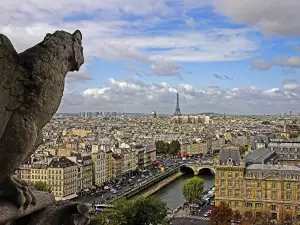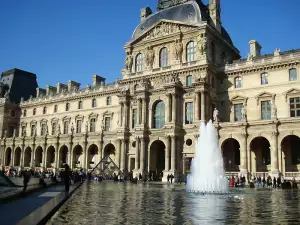Paris

Paris, the very name of the romantic French capital wakes mental pictures, accompanied by a pleasant accompaniment of the accordion. This idyllic image could be supplemented by an enjoyable evening spent over a glass of wine near the river Seine, which many lovers in the French capital are of the opinion that the Seine is the beginning and end of everything.
Paris is a cultural, fashion, media, entertainment, educational capital not only of France but one of the most beloved and deserving honored cities worldwide. Paris is located in north France on both banks of the River Seine.

The picturesque river, can rightly be called the inspiration of the impressionists, divides the city into two parts - the right bank to the north and the smaller left Bank to the south. In the town of Paris live close to 2 million people, but the population throughout the Paris conurbation, which extends about 120 km, reaches a significant 12 000 000 inhabitants.
The name of Paris comes from the Celtic tribe parizi who were considered the founder of the city in 250 BC. During the time of the Roman occupation, between 1st and 6th century, the city was called Lutetia Parisiorum, but at the time of Julian the Apostate (360-363) it was renamed Paris. Roman governments had ceased by 508, when Clovis I maked Paris the capital of the Merovingian dynasty of the Franks. In the 11th century it spread to the right bank. In 12th and 13th centuries, which included the reign of Philip II Augustus (1180-1223), the city grew strongly. Around 1328 with its population of about 200 000 inhabitants Paris became the largest city in Europe.
You can not miss over France the fundamental historical moment that marks the beginning of the French Revolution. It begins with the storming of the Bastille on July 14th, 1789 and ends 10 years later in 1799.

France led by Paris celebrates its national holiday on 14th July. This is the date marking the fall of the Bastille and the beginning of the French Revolution, which is one of the European and global symbols of freedom and democracy. On this day the French all over the world celebrate speaking loudly. The official parade in Paris on the occasion starts from the Champs-Elysees, and is led by the president. Then the fun continues throughout the city. Fireworks attract thousands of people at Campus Martius. The evening before, many locals of Paris are flocking to the square, where once was the Bastille and they dance until dawn. The National Day of France in Paris is accompanied by a gay ball in the open and the fire brigade also prepares an interesting show for residents.
The coast of the River Seine is an incredible place to walk, an experience that should not be saved. Numerous piers along the shore are beautifully landscaped and designed only for walking and recreation. There are very nice facilities, and many stalls of books with people who sell their old books. The coast of the Seine is included in the list of World Cultural Heritage sites, and among other things, the central headquarters of the organization is located precisely in Paris.

Paris is famous for its many boulevards, covered with chestnut, the most famous of which is the Champs-Elysees. The name of this street is worldwide and comes from Elysian Fields, which are the realm of the dead in Greek mythology. At the western end of Champs-Elysees is the emblematic Arc de Triomphe, which is located in the center of the square Charles de Gaulle.
The place where the Arc de Triomphe was built in 1836 is called "Square of the star”, because many avenues that lead back to here. The indisputable symbol of Paris is the Eiffel Tower which is located in the Campus Martius city. The 324 m high steel structure is visited annually by more than 6 million tourists from around the world. You can visit the tower at night when you can watch the special light show and entrance fee is 8 to 13 euros.
Among other places of worship in Paris that must be noted is one of the largest, beautiful and spectacular museums in the world - the Louvre, which was opened in 1793. There are 35, 000 works of art including paintings, sculptures, ceramics, Egyptian, Greek, Roman artifacts, etc. They are divided into three compartments of the Louvre - frost, Richelieu and Sully. One section exposes the famous "Mona Lisa" of Leonardo da Vinci.
Another obligatory stop in Paris is the Notre Dame, known as the Virgin Mary Paris. This Gothic, Roman Catholic cathedral was completed in 1345, and has impressive dimensions that can accommodate up to 9, 000 people.














